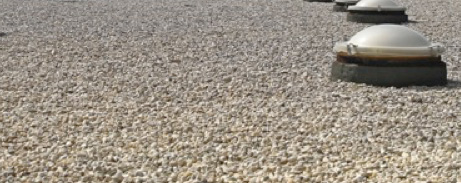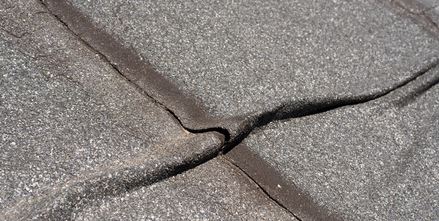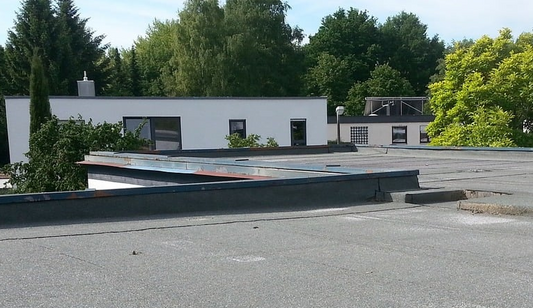You've likely heard about the durability and eco-friendly nature of GRP fibreglass, especially in roofing applications. However, you might still have some questions about its maintenance, application, and longevity.
For instance, understanding the ideal conditions for applying GRP resin or how to effectively maintain your fibreglass roof can profoundly impact its lifespan and performance. Why might a fibreglass roof be flaking or how to handle those unsightly white patches? Let's look at the answers.
What is GRP Resin?
GRP resin, a cornerstone of GRP fibreglass roofing, is a thermosetting plastic that, when mixed with a catalyst and hardener, forms a robust bond with fibreglass reinforcement.
This resin is primarily based on polyurethane or polyester, enhancing your roof's waterproofing and UV resistance. You'll find it quite versatile, as it's available in various colors and can be tailored to meet specific needs like high-temperature tolerance or better adherence to different substrates.
The pot life of GRP resin, the duration it remains workable after mixing, varies. Factors like the ambient temperature, the proportion of catalyst used, and how well you mix it play vital roles.
This flexibility allows you to adjust according to the day's conditions, ensuring perfect application every time.
Moreover, GRP resin isn't just about creating a hard shell over your home; it's adaptable for specific uses.
Whether you need enhanced flexibility, superior impact resistance, or increased fire retardancy, this resin can be formulated to suit. You're investing in a material tailored not just to protect but also to meet rigorous safety and functional standards.
Such customization makes GRP resin ideal for various applications, from your flat roof to more demanding industrial environments.
How do you clean a fibreglass flat roof ?
To effectively clean a fibreglass flat roof, start by gently sweeping away any loose debris with a soft-bristled brush.
This initial step helps prevent scratches on the surface and makes the cleaning process smoother.
Next, tackle dirt build-up using a non-abrasive scrubber and some mild detergent.
You must avoid using harsh chemicals, as these can damage the fibreglass. Apply the soapy water in sections, scrubbing gently to lift stains without scratching the surface.
Remember, the key is to be thorough yet gentle to maintain the integrity of the roof.
After scrubbing, rinse the roof thoroughly with clean water.
Removing all soap residue is vital because leftover detergent can attract more dirt, defeating the purpose of your cleaning.
Make sure you rinse until the water runs clear.
What's so great about fibreglass roofing ?
Fibreglass roofing offers a remarkable combination of durability and aesthetic appeal, making it an excellent choice for your building needs.
You'll find that GRP fibreglass flat roofing isn't just about looks; it's built to last. With a minimum guarantee of 25 years and a potential lifespan reaching 100 years, it notably outperforms traditional felt roofs. That means you're making a long-term investment that's both practical and economical.
What's more, GRP roofs are practically maintenance-free.
You won't be bogged down with constant upkeep; a simple cleaning with soapy water is all it takes to keep your roof looking new. This ease of maintenance not only saves you time but also makes it an environmentally friendly option, as it lasts at least three times longer than conventional roofing materials.
Safety is another major benefit.
These roofs are waterproof, flame retardant, and can be made non-slip if you're considering a walkable roof or a roof garden. Plus, the ability to mold GRP fibreglass in situ means there are no joints or seams, reducing potential leaks and enhancing both the safety and aesthetic continuity of your roof.
Why is my fibreglass roof flaking?
Flaking on your roof can be frustrating, but understanding the causes is the first step to addressing the problem.
If you're noticing that your fibreglass roof is starting to flake, it's likely due to a few common issues. Initially, inadequate surface preparation might be to blame.
If the surface wasn't properly prepared before the fibreglass was applied, the laminate mightn't adhere well to the substrate. This poor adhesion can lead to flaking as the bond between layers weakens.
Another potential cause is the application of the resin.
If it was applied unevenly or insufficiently, weak spots can develop on your roof's surface, eventually leading to flaking.
You'll also want to examine the role of weather.
Extreme conditions like heavy rain, hail, or prolonged exposure to direct sunlight can degrade the topcoat of your roof, causing it to flake over time.
Moreover, regular maintenance is vital.
If you're not cleaning your roof regularly, dirt and debris can accumulate.
This buildup can also contribute to flaking.
Finally, the quality of the topcoat matters.
Using a low-quality or incompatible topcoat can accelerate flaking, especially if it isn't suited to withstand local weather or occasional foot traffic.
How to get rid of white patches on a GRP roof?
Many homeowners notice white patches on their GRP roofs, which can be a nuisance.
Luckily, you can tackle this issue with some straightforward steps.
First, it's vital to examine the area. Grab a bucket of soapy water and a soft brush. Gently scrub the white patches to remove any loose material and dirt.
Often, these white patches are just chalky residues left by weathering, and a good wash can make a significant difference.
If cleaning doesn't do the trick, you might need to take a slightly more aggressive approach.
You can use a mild, water-based degreaser. Apply it according to the manufacturer's instructions, usually letting it sit for a few minutes before washing it off with clean water.
This can help break down the tougher residues.
Once your roof is clean and dry, assess the situation.
If the white patches are gone, great!
If not, they might be due to more ingrained issues like oxidation, which is common in older installations.
In such cases, it might be necessary to ponder calling in a professional who can assess the condition of your roof and recommend further actions such as a specific treatment or even a repair job.
Do you need to paint fibreglass roof?
You don't need to paint your GRP fibreglass roof, as it comes with a UV-stable topcoat designed to provide both protection and aesthetic appeal.
This specialized layer is specifically formulated to resist fading, chalking, and cracking, which guarantees your roof keeps looking great without additional coatings. The durability of this topcoat means that the original appearance of your roof is maintained over a long period, saving you both time and money on unnecessary maintenance.
While it might be tempting to change the color of your roof to match new exterior designs, painting your fibreglass roof isn't recommended.
Doing so can compromise the integrity of the protective topcoat and may even void your warranty. If you must change the color, it's vital to use a paint that's compatible with GRP fibreglass, adhering strictly to the manufacturer's guidelines.
Instead of painting, regular cleaning with soapy water is advised to keep your roof in top condition.
This simple maintenance not only helps preserve the roof's appearance but also enhances its longevity and performance, eliminating the need for any additional treatments.
Why is my GRP top coat not curing?
If your GRP top coat isn't curing, it's usually due to environmental factors or application errors.
First, let's talk about temperature. If it's too cold, typically below 5°C, the resin won't cure properly. Similarly, high humidity can also inhibit the curing process. It's vital to check the weather conditions before starting your application.
Next, consider the catalyst mixing ratio. If you've added too little catalyst, the reaction needed for curing won't occur efficiently.
Be sure to follow the manufacturer's instructions carefully when mixing. On the other hand, if you've added too much, it can result in a tacky finish that doesn't fully harden.
The age of the materials can also play a role. Both resin and catalyst have a shelf life. Using outdated materials can lead to poor curing.
Always check the expiry dates and confirm you're using fresh supplies.
Lastly, check the surface preparation. Contaminants like dust, oil, or moisture can prevent proper adhesion and curing.
Make sure the surface is clean and dry before applying the top coat. Following these guidelines will help you achieve a well-cured, durable GRP top coat.
Can you lay a fiberglass roof in the rain?
Laying a fiberglass roof during rainy conditions isn't recommended. Moisture can affect the curing process of the resin, leading to a weakened roof that mightn't offer the robust protection or longevity you're expecting.
Ideally, you should wait for a dry day with moderate temperatures to start your roofing project.
If you find yourself caught by an unexpected rain, you'd better cover the area with a tarp or similar waterproof sheeting until the weather clears.
This prevents the resin from being washed away or improperly curing, which can result in a tacky, ineffective finish.
Remember, patience in waiting for the right conditions can save you from costly repairs or redoing the installation entirely.
Moreover, working on a roof during wet conditions poses significant safety risks.
Slippery surfaces increase the likelihood of accidents.
Always prioritize your safety and that of your team.
It's not worth risking injury for the sake of speeding up completion.
Is GRP roofing eco-friendly?
GRP roofing stands out as an eco-friendly choice for modern construction needs.
You'll find that its longevity alone makes it a superior option. With a lifespan that's at least three times longer than traditional roofing materials, it drastically reduces the frequency of replacements.
This longevity means less waste and fewer resources used over time.
Moreover, GRP is fully recyclable. Once it's served its purpose, the material can be ground down and repurposed, which minimizes its environmental footprint.
You won't have to worry about contributing to landfill waste with a GRP roof.
Another significant advantage is the installation process.
GRP roofing systems are cold-applied, which means no flames are required.
This method not only enhances safety but also cuts down on energy consumption typically associated with heating elements in other roofing applications.
Furthermore, the production of GRP roofing is an environmentally considerate process.
It's characterized by low energy requirements and minimal waste production.
And if you're looking to combat the urban heat island effect, you can opt for a solar reflective coating on your GRP roof, which helps reduce the building's overall energy consumption and carbon footprint.




